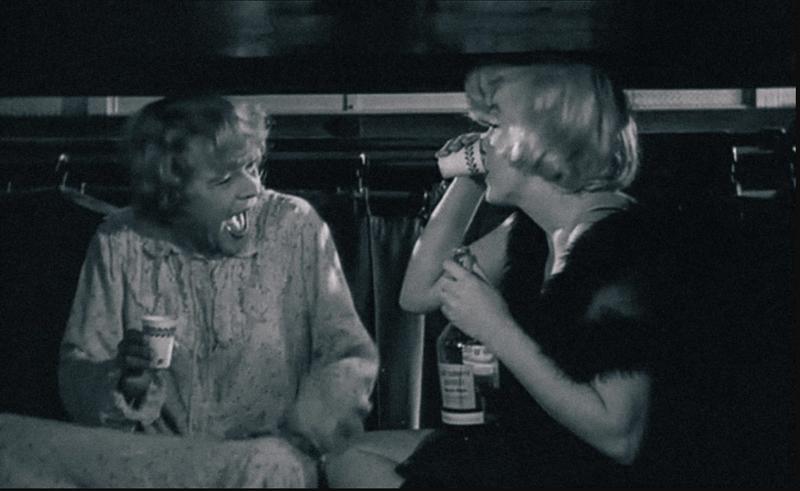The Hays Code: Hollywood's Golden Age's Hard Rules, Explained
By | November 21, 2022

If you pull up most American movies from the 1930s and '40s, you'll find that they're sweet to the point of cavity-inducing, with a hardened spine of morality that seems to be made of steel. That's because the films of the day were policed by a production code that required films to be "wholesome" and "moral" to keep the innocence of the American viewing public intact. The Motion Picture Production Code, known as the "Hays Code" after Will Hays but decided upon by a collective of studio heads, shaped filmmaking more than anything else between the 1930s and 1960s.
Hollywood governs itself

Rather than ask the federal government to create a national censorship board—a decision that would basically hand over editorial control to Washington—Tinsel Town executives came up with their own code. This list of 36 self-imposed "don'ts and be carefuls” was enforced by Hollywood while former Postmaster General Will Hays oversaw the PR for the self-censorship gamble.
The Hays Code

When the Code was announced, Hays declared it a high set of standards that producers needed to uphold. He said that if films wanted to be considered a "universal form of entertainment," they needed to go forward with "good taste and community value." The copy on the code stated that "no picture shall be produced which will lower the moral standards of those who see it. Hence the sympathy of the audience shall never be thrown to the side of crime, wrong-doing, evil or sin." A few of the specific rules laid out in the Code were that:
Law, natural or human, shall not be ridiculed, nor shall sympathy be created for its violation.
The technique of murder must be presented in a way that will not inspire imitation.
Arson must be subject to the same safeguards.
Methods of smuggling should not be presented.
Excessive and lustful kissing, lustful embraces, suggestive postures and gestures are not to be shown.
Miscegenation (sex relationship between the white and black races) is forbidden.
The Rules

On top of those very important rules, there were rules and restrictions on:
- Keep Your Clothes On
- Suggestive dancing? Not in our movies
- Discussions of sexual perversity
- Once again, you must keep your clothes on
- Superfluous use of liquor
- Ridicule of religion
- Scenes of passion? No way!
No-No Words

It wasn't just crimes, actions, and visuals that were ruled by the Hays Code but colloquial phrases as well. According to the Hays Code, these words were banned in their corresponding countries:
- Bum (England)
- Bloody (England)
- Cissy or sissy (England)
- Gigolo (England)
- Specific names of poison (United States)
- Punk (England)
- "Sex appeal" (England)
- "Sex life" (England)
- Shag (British Empire)
- Shyster (England)
- "Stick 'em up" (United States and Canada)
The Hays Code Was Voluntary (To A Point)

There was no specific rule that said a film had to stick to the Hays Code. No one was going to be arrested for the visual documentation of excessive kissing, but if you stood your ground on it, it was likely your movie just wouldn't get made. In the '30s and '40s, a movie had to stick to the Code to be played in theaters. Even cartoon characters had to become chaste if they wanted a shot at the Saturday matinees.
Filmmakers Rebelled (And Succeeded)

As the decades passed, styles and standards changed. What outraged people in the 1930s was ho-hum to viewers in the 1950s, but the code remained. Following World War II, many filmmakers were less concerned about following the rules laid about by the studios. Many of them veterans, accustomed to racy Europeans films, and they were in the midst of the birth of television. The images and sounds projected into American living rooms every night were often more "adult" than those on the silver screen.

In the early 1950s, Merv Griffin took part in the first opened-mouth kiss of the Code era in the musical So This Is Love, and Frank Sinatra was nominated for an Oscar in 1955 after starring in The Man With the Golden Arm as a struggling heroin addict. The good reviews and big box office receipts showed that the Code mattered less and less to audiences.
A Drag Comedy Killed The Code

One thing that didn't help the Hays Code was that Will Hays allowed the rules to be bent as the years went on. In 1959, he stated that if a "moral conflict" provided "the proper frame of reference," a Code-approved film could discuss any topic, but homosexuality was always verboten. However, that same year, Some Like It Hot was released. It was the final nail in the coffin of the Hays Code. The movie features Jack Lemmon and Tony Curtis in drag, Marilyn Monroe guzzling booze in barely-there outfits, and a finale that hints at Lemmon marrying a man. The movie was released without a certificate of approval from the Production Code Administration, and it was a huge success.
The Rise Of The MPAA

Following the end of the Hays Code, the MPAA (The Motion Picture Association of America) suggested that if a series of rules weren't going to control Hollywood, a classification system could at least let wide-eyed and hapless viewers know what they were in for. The ratings that we know today came to fruition in 1968, but it does about as much good as the production code. In 1969, the X-rated Midnight Cowboy won Best Picture at the Academy Awards, and as sensibilities change, the ratings mean less and less.

